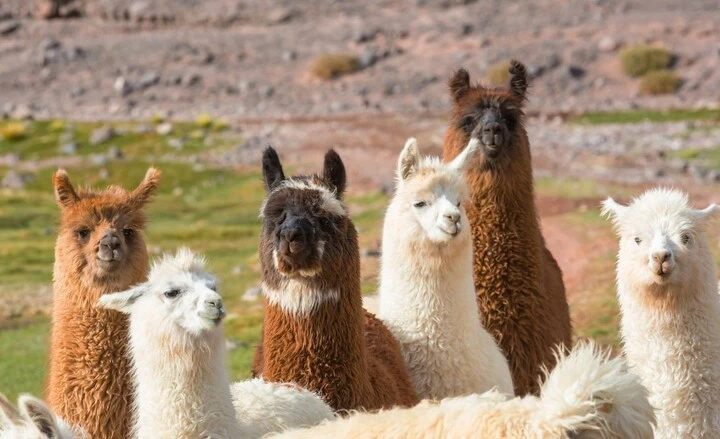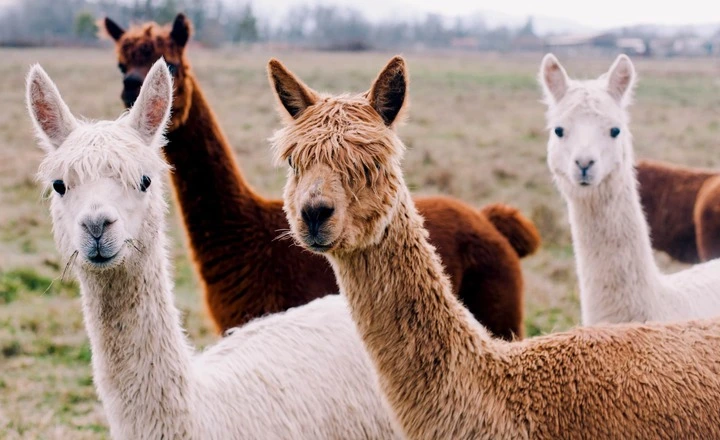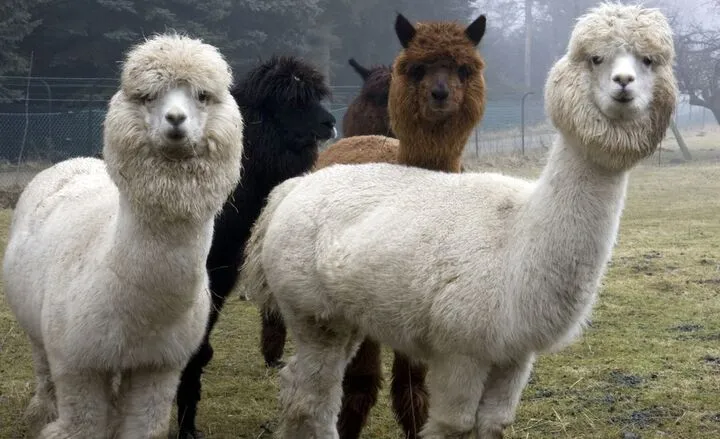Llamas and alpacas are some of the most intriguing and endearing animals. With their long necks, soft fur, and captivating gaze, these South American camelids have captured the hearts of many animal lovers worldwide.
But amidst all the admiration and fascination surrounding these gentle giants, Can Llamas and Alpacas Breed?
Alpacas and llamas Breed
Alpacas and llamas are domestic mammals bred from guanacos for use as beasts of burden, particularly during the Inca Indian civilization. Due to their load-carrying abilities, humans have utilized these animals for transportation for thousands of years.
They are valued for their high-quality fleece production. Alpacas and llamas are primarily found in Bolivia and Peru and belong to the camel family Camelidae.
The main lamoid species within this family include alpacas, llamas, vicuñas, and guanacos. While alpacas and llamas are domesticated species, vicuñas and guanacos remain wild.
An exciting aspect of these animals is their ability to interbreed with each other, resulting in fertile offspring. Alpacas can be categorized into two appearance types, Huacaya with crimpy sheep-like wool and Suri with silky dreadlocks.
Crossbreed of Alpacas and Llamas – Huarizo
Crossbreeding between Alpacas and Llamas can result in the birth of a unique offspring known as a Huarizo. These hybrids inherit characteristics from both parent species, typically having a llama-like head and an alpaca-like tall body.
The process involves careful study of the traits and lifestyle of both parents to predict the characteristics the offspring will exhibit. The names given to the offspring, such as Huarizo or Misti, depend on the gender and species of the parents involved in the crossbreeding.
While these hybrid animals are known for their lovable nature and blend of traits from both Alpacas and Llamas, it is important to note that such crosses are considered undesirable in their native regions of Bolivia, Peru, and Chile.

Advancements in breeding and genetic science have allowed for the creation of these unique hybrids which can be fascinating to observe for those interested in animal genetics.
Characteristics of Huarizo – Alpaca and llama cross
The Huarizo, a cross between an alpaca and a llama, is known for its unique characteristics that make it stand out in the community.
With being smaller in size compared to llamas, Huarizos have longer fiber that is coarser than both alpacas and llamas. This fiber is often blended with other materials like polyester to enhance its quality, making it a popular choice in the garment industry for knitwear production.
The distinctive feature of the Huarizo is its appearance. In body size, it resembles alpacas more closely but has a face that resembles llamas. Huarizos possess natural crimp in their fiber, providing elasticity and warmth in their fleece.
Although traditionally believed to be sterile animals, recent studies suggest that fertility preservation may be possible through genetic modifications, opening up new possibilities for breeding programs and conservation efforts involving the Huarizo.
How Do You Recognise A Pure Llama Or Alpaca?
Recognizing a pure llama or alpaca can be challenging without DNA testing, as physical traits can vary even within purebred animals. Some general characteristics can help distinguish between the two species.
Llamas tend to be larger in size with long ears and a more robust build, while alpacas are smaller with shorter ears and a finer fleece. Llamas have a more pronounced face shape compared to the softer features of alpacas.
DNA testing is often recommended as the most accurate method to ensure the purity of an animal for breeding purposes.
This testing can provide confirmation of the animal’s lineage and genetic makeup, helping breeders make informed decisions about pairing animals for desired traits.

While physical characteristics can offer some clues to purity, DNA testing remains the gold standard for verifying the genetic integrity of llamas and alpacas.
Where do Llamas and Alpacas Come From?
Llamas and alpacas originate from South America, where they were domesticated from two different camelid species around 5-8000 years ago.
Alpacas are descendants of the wild vicuña, which is the smallest camelid species, while llamas come from the guanaco, a larger wild cousin. With their shared ancestry, llamas and alpacas are distinct species with unique characteristics and roles.
Indigenous peoples in the Andes region valued these animals for their wool, meat, and use as pack animals.
Llamas are known for their strength and ability to carry heavy loads at high altitudes, while alpacas are prized for their soft fleece. Llamas and alpacas can be found in various parts of the world due to their popularity as pets and livestock.
Commonalities
Both share several commonalities despite their differences, much like comparing two distinct dog breeds. Both animals are descendants of camels, which explains their similar physical characteristics and behaviors.
Llamas and alpacas can interbreed and produce fertile offspring, making them unique in the animal kingdom.
These gentle creatures are both excellent choices for small farms or 4-H projects due to their manageable size and friendly nature.

Whether you prefer llamas or alpacas, both animals offer companionship, versatility, and a rewarding experience for those who choose to raise them.
Conclusion
Breeding llamas and alpacas is a complex process that requires careful consideration of various factors such as genetics, behavior, and health.
While it is possible for these two camelid species to interbreed and produce offspring known as huacayas, successful breeding may not always result in healthy or viable hybrids.
Breeders must work closely with veterinarians and experts in camelid reproduction to ensure the well-being of the animals involved and the success of the breeding program.
By understanding the unique characteristics and requirements of llamas and alpacas, breeders can make informed decisions that contribute to the preservation and improvement of these fascinating animals.
FAQs
Can llamas breed with sheep?
No, llamas and sheep cannot breed with each other. While both llamas and sheep are domesticated animals, they belong to different species and have a different number of chromosomes, making it biologically impossible for them to interbreed.
Are llamas Friendlier than Alpacas?
Llamas and alpacas are both domesticated South American camelids, but they have different temperaments.
Can Alpacas love Humans?
Alpacas are social animals that can form strong bonds with humans through positive interactions and care.
